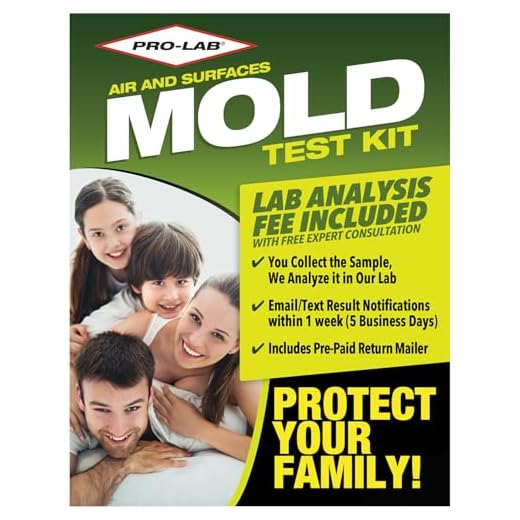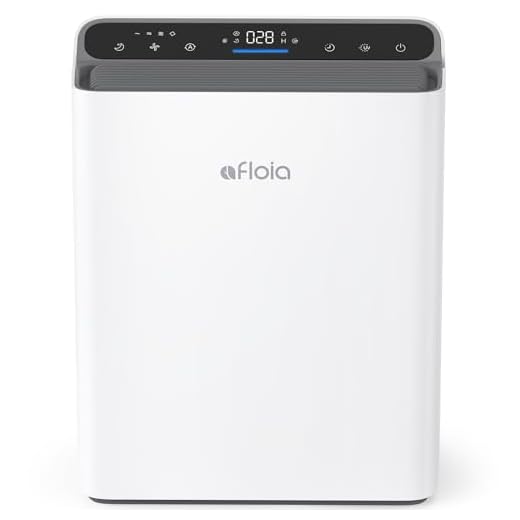



It’s crucial to identify the source of any strange odors in your living space. If you notice a scent reminiscent of feline waste, it’s time to investigate further. The presence of certain fungi can indeed produce aromas that mimic those of animal excretions, often due to specific compounds released during their growth process.
Commonly found in damp areas, certain species of mold may release volatile organic compounds (VOCs) that generate odors similar to those associated with pets. These compounds arise from the breakdown of organic material, especially in environments where moisture is prevalent. If you detect such a smell, assessing the humidity levels and the presence of any water damage is essential.
Taking immediate action can help mitigate both the odor and any potential health risks. Ensure proper ventilation in affected areas, and consider utilizing dehumidifiers to reduce moisture. If the situation persists, consulting a professional for thorough inspection and remediation might be necessary. Addressing these issues promptly not only improves air quality but also enhances the overall comfort of your home.
Identifying Similar Odors
The scent that resembles my litter box can originate from various sources. If you notice an unpleasant aroma in your home that is reminiscent of feline waste, it’s essential to investigate the cause thoroughly. Different types of organic substances can emit such odors under certain conditions.
One potential culprit is damp environments where bacteria thrive. These microorganisms can produce a strong, ammonia-like scent, which can be confused with the smell associated with my litter. Checking areas with moisture, such as basements or bathrooms, is advisable. Look for signs of water leaks or condensation, as these conditions encourage bacterial growth.
Testing and Prevention
Testing the air quality is a practical step. Using a home testing kit can help identify specific issues related to air quality. If the problem persists after cleaning and drying affected areas, consulting with a professional might be necessary.
To prevent similar issues in the future, ensure proper ventilation in all rooms. Regularly inspect for leaks and maintain a clean environment. Using dehumidifiers in high-moisture areas can also help reduce the chances of unpleasant odors developing.
Identifying the Odor: Mold vs. Cat Urine
When I catch a whiff of something unusual, I instinctively know it’s time to investigate. The distinctive scent can be misleading, often resembling the aroma of feline markings. Understanding the differences is key for both humans and their furry companions.
Characteristics of Each Odor
The musty scent associated with damp environments usually has a deeper, earthy tone. It often lingers in corners, basements, or areas with poor ventilation. This odor can be quite persistent, especially in humid conditions.
In contrast, the fragrance linked to my kind tends to be sharper and more pungent. It has an ammonia-like quality, which quickly captures attention and can be overwhelming. This scent usually originates from specific spots where I claim my territory.
Testing for Source
To differentiate, consider the location and intensity of the odor. If it’s concentrated near damp surfaces or water leaks, the musty smell might be the culprit. If the aroma is localized to specific areas, especially where I spend time, it’s likely from my antics.
Using a moisture meter can help identify hidden dampness that may contribute to the musty scent. If that’s not available, a simple inspection for visible signs of growth can aid in pinpointing the source. Trust your nose; it rarely lies!
In summary, recognizing these distinct odors can help maintain a fresh environment for both humans and their beloved pets.
Common Types of Fungi That Produce Urine-Like Scents
Several types of fungi can emit odors reminiscent of waste. Here are a few notable examples:
Aspergillus: This species is common in damp environments and can produce a musty aroma. Certain strains might emit a scent that resembles waste, especially when they decay organic materials.
Penicillium: Often found in spoiled food and damp areas, this type can release a strong odor. The smell may be interpreted as similar to excrement, particularly in high concentrations.
Cladosporium: Frequently present in indoor and outdoor settings, this organism thrives in moist conditions. Its scent can be sharp and unpleasant, sometimes confusing those sensitive to odors.
Stachybotrys: Known as black mold, this variant thrives on wet surfaces. Its presence often correlates with a strong, earthy odor that some might associate with waste.
Identifying these fungi may require professional assistance, especially when odors are persistent. Maintaining proper ventilation and addressing moisture issues can help prevent growth and associated scents.
Health Risks Associated with Mold Exposure
Exposure to certain fungi can lead to various health issues, particularly respiratory problems.
Individuals with allergies or asthma may experience heightened symptoms, including:
- Coughing and wheezing
- Shortness of breath
- Nasal congestion and runny nose
Prolonged contact with contaminated environments can result in chronic health risks, such as:
- Increased risk of respiratory infections
- Development of hypersensitivity pneumonitis
- Potential long-term lung damage
People with weakened immune systems are particularly vulnerable. Symptoms might include:
- Fever
- Fatigue
- Skin rashes
Immediate removal from affected areas and consultation with healthcare professionals are advisable to mitigate these risks. Regular inspections and maintaining dryness in living spaces can help prevent growth and safeguard health.
How to Detect Unwanted Growth in Your Home
Check for visible signs on walls, ceilings, and floors. Look for discoloration, dark patches, or a fuzzy texture. These can indicate the presence of unwanted growth.
Visual Inspection Checklist
- Inspect areas prone to moisture, such as bathrooms and kitchens.
- Examine behind appliances and furniture for hidden spots.
- Look for leaks in pipes or roofs that may contribute to dampness.
Monitoring Humidity Levels
Keep humidity levels below 50%. Use a hygrometer to monitor. If levels are high, consider using a dehumidifier to reduce moisture in the air.
Be aware of unusual odors. If a scent resembling animal waste persists despite cleaning, it could indicate hidden colonies. For pet owners, ensure your furry friends are not the source. If your kitty is having trouble, check out the best cat food for constipated cats.
- Pay attention to musty or earthy odors.
- Consider using air purifiers to reduce airborne particles.
If you suspect hidden colonies, professional inspection may be necessary. Experts can conduct thorough assessments and recommend appropriate remediation measures.
Steps to Remove Mold and Eliminate Odors
First, gather the necessary supplies: gloves, a mask, a sponge, a spray bottle, and a mixture of water and vinegar or a commercial cleaner specifically designed for fungal issues.
1. Identify the affected areas. Look in damp locations such as bathrooms, basements, and around windows.
2. Ventilate the space. Open windows and doors to allow fresh air to circulate, helping to reduce unpleasant fragrances.
3. Prepare the cleaning solution. Mix equal parts of water and vinegar in a spray bottle. Alternatively, use a specialized cleaner according to the manufacturer’s instructions.
4. Apply the solution. Generously spray the affected surfaces and let it sit for about 10-15 minutes. This allows the formula to penetrate and break down any unwanted growth.
5. Scrub the surface. Use a sponge or brush to scrub the area thoroughly, ensuring all visible spots are cleaned. For stubborn patches, repeat the application as necessary.
6. Rinse the area. Wipe the surface with a clean, damp cloth to remove any residue from the cleaning solution.
7. Dry the area completely. Use fans or a dehumidifier to help prevent moisture from returning, which can lead to further issues.
8. Check for leaks. Inspect pipes and roofing to ensure there are no ongoing sources of moisture.
| Step | Action |
|---|---|
| 1 | Identify affected areas |
| 2 | Ventilate the space |
| 3 | Prepare cleaning solution |
| 4 | Apply solution |
| 5 | Scrub the surface |
| 6 | Rinse the area |
| 7 | Dry the area |
| 8 | Check for leaks |
9. Maintain a dry environment. Use a dehumidifier in humid areas and regularly check for signs of moisture.
By following these steps, it’s possible to rid your home of unwanted growth and the associated odors, creating a fresher living space.
Preventing Future Fungal Growth and Odors
To keep your home free from unwanted spores and their associated scents, it’s essential to maintain low humidity levels. Use dehumidifiers in damp areas like basements and bathrooms. Aim for relative humidity below 50% to deter growth.
Regularly inspect your living space for leaks or water damage. Fix plumbing issues immediately and ensure proper ventilation in kitchens and laundry rooms. Proper airflow reduces moisture accumulation.
Consider using moisture-absorbing materials in storage areas. Silica gel packs or activated charcoal can be effective in absorbing excess humidity and odors.
Cleaning and Maintenance Tips
Clean surfaces with vinegar or specialized cleaning solutions that target unwanted spores. Regular vacuuming with a HEPA filter can help trap spores and allergens, preventing them from spreading.
Implement a routine for cleaning and inspecting areas prone to dampness. This includes checking behind appliances and under sinks. If you’re using a pressure washer for outdoor surfaces, look into best pressure washer extension wands to ensure thorough cleaning.
Lastly, consider using air purifiers equipped with HEPA filters to help maintain air quality. This can significantly reduce any lingering scents and improve your home environment.
FAQ:
Can mold really smell like cat urine?
Yes, mold can emit odors that resemble the smell of cat urine. This is often due to specific types of mold, such as certain species of Stachybotrys or Aspergillus, which can produce volatile organic compounds (VOCs) that have a similar scent. The presence of mold in damp or humid areas, combined with the release of these compounds, can lead to a smell that is reminiscent of cat urine. It’s important to address any mold growth promptly, not only for the unpleasant odor but also for potential health concerns.
What should I do if I notice a smell like cat urine in my home?
If you detect an odor similar to cat urine, it’s advisable to investigate the source thoroughly. Start by checking areas prone to moisture, such as basements, bathrooms, and kitchens, as mold often thrives in these environments. If you find visible mold growth, it is crucial to address it immediately. You may need to clean the affected areas with appropriate mold removal solutions or, in more severe cases, consult a professional mold remediation service. Additionally, ensure that your home is well-ventilated and that any leaks are repaired to prevent further mold growth. If the smell persists despite your efforts, consider seeking assistance from a home inspector or mold specialist who can identify hidden mold sources.









